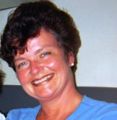User:Yanbu
| Occupation: | EFL Teacher | ||
| Nationality: | PAKISTANI | ||
| Languages: | Pashto, Urdu, English | ||
| Country: | Saudi Arabia | ||
| |||
| |||
Contents
My Profile
My name is Hamid Khan.
Professional Background
Teaching of English for last ten years, currently in Saudi Arabia.
Education
MA TESOL
My Interests
Professional
Culture and TESOL, Integration of technology in TESOL
Personal
- JOGGING
- SWIMMING
- CURRENT AFFAIRS
My Projects
Sample Lesson1: Forming Questions_Objective and Outcomes
Sample Lesson1: Forming Questions_Definition and key points
Sample Lesson1: Forming Questions_Activity and Assignment
Photos
Pedagogical Template
| The students, at the end of the lesson, should be able to form and use YES/NO question forms used in English language. |
| A question is a request for information or action. A question always ends with a question mark (?).A Yes/No Question is a question that can be answered with yes or no |
|
Forming yes/no Questions Look at the following examples: A: Are you from around here? B: Yes, I am.
B: Yes, I do.
B: No, thanks.
B: Yes, I am. When we want to ask yes/no questions we can use
or
as question words. We use
we use
We use
Yes/no questions with the verb be are created
|
My Sandbox
My Reflection
Feedback & Notes from my WikiNeighbours
Dear WikiNeighbours, I have completed the task of 'To Do List' as part of Day 4 activity. Please have a look at it and let me know what do you feel about it. Thanks
(![]() : Well done, Hamid. I can see you are getting this fast. So keep adding more content, applying the first few tutorials to get your certification. (italic, bold, bullets, numbers, etc.) Great work so far. Warm wishes --Patricia Schlicht 22:34, 12 February 2010 (UTC))
: Well done, Hamid. I can see you are getting this fast. So keep adding more content, applying the first few tutorials to get your certification. (italic, bold, bullets, numbers, etc.) Great work so far. Warm wishes --Patricia Schlicht 22:34, 12 February 2010 (UTC))
(![]() : Hi Hamid, Great work you are doing. Add more content to your page. This workshop is offering us a new opportunity to learn a novel way of teaching/learning. --Ibrahim K. Oyekanmi 16:29, 18 February 2010 (UTC)
: Hi Hamid, Great work you are doing. Add more content to your page. This workshop is offering us a new opportunity to learn a novel way of teaching/learning. --Ibrahim K. Oyekanmi 16:29, 18 February 2010 (UTC)
 (
(![]() : Dear Abdul. Thanks for coming in again. I have moved your content development under your projects as it shouldn't be at the top of your introduction. It seems our mails keep failing. Please get in touch with me, so we can sort this out. thanks. Great work. Warm wishes --Patricia Schlicht 16:24, 24 April 2010 (UTC))
: Dear Abdul. Thanks for coming in again. I have moved your content development under your projects as it shouldn't be at the top of your introduction. It seems our mails keep failing. Please get in touch with me, so we can sort this out. thanks. Great work. Warm wishes --Patricia Schlicht 16:24, 24 April 2010 (UTC))
Hi Hamid! It's nice to know you! --Teromakotero 19:52, 24 April 2010 (UTC)
(![]() : Hi, Nice to see you. Welcome and good wishes. --Vinodpr111 13:17, 27 April 2010 (UTC))
: Hi, Nice to see you. Welcome and good wishes. --Vinodpr111 13:17, 27 April 2010 (UTC))
Welcome to eL4C37
- Hello and welcome to eL4C37, a free online Learning4Content wiki skills workshop.
- You may wish to check the schedule of the workshop, introduce yourself, and check the list of participants.
- Whenever you have the time, click on each of the above links and/or start ahead of time with the Pre-Work and Day 1 activities.
- Enjoy the workshop :-)
- Your facilitators:







